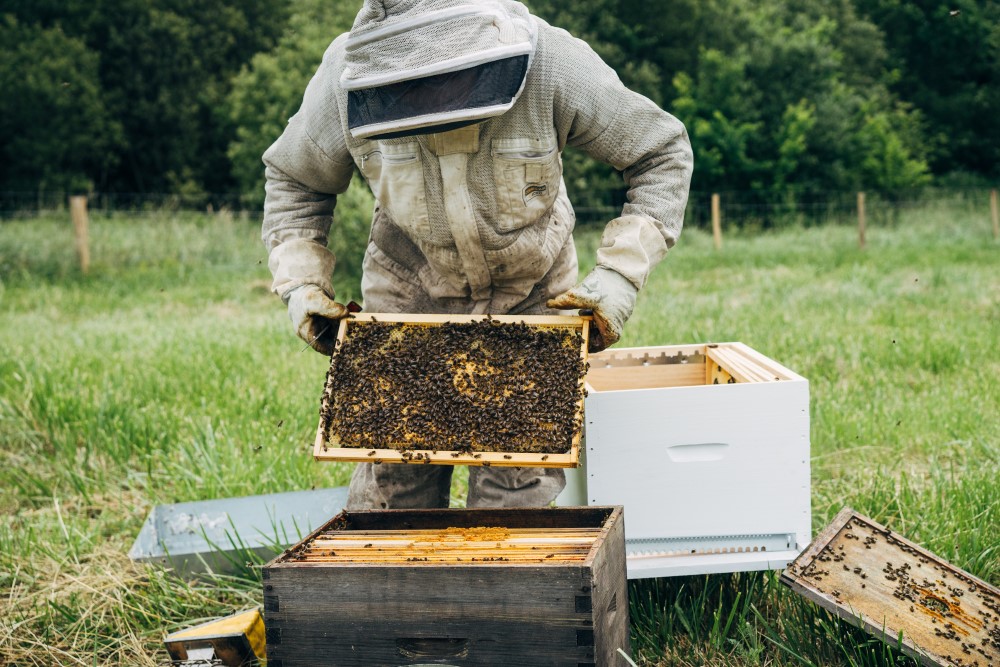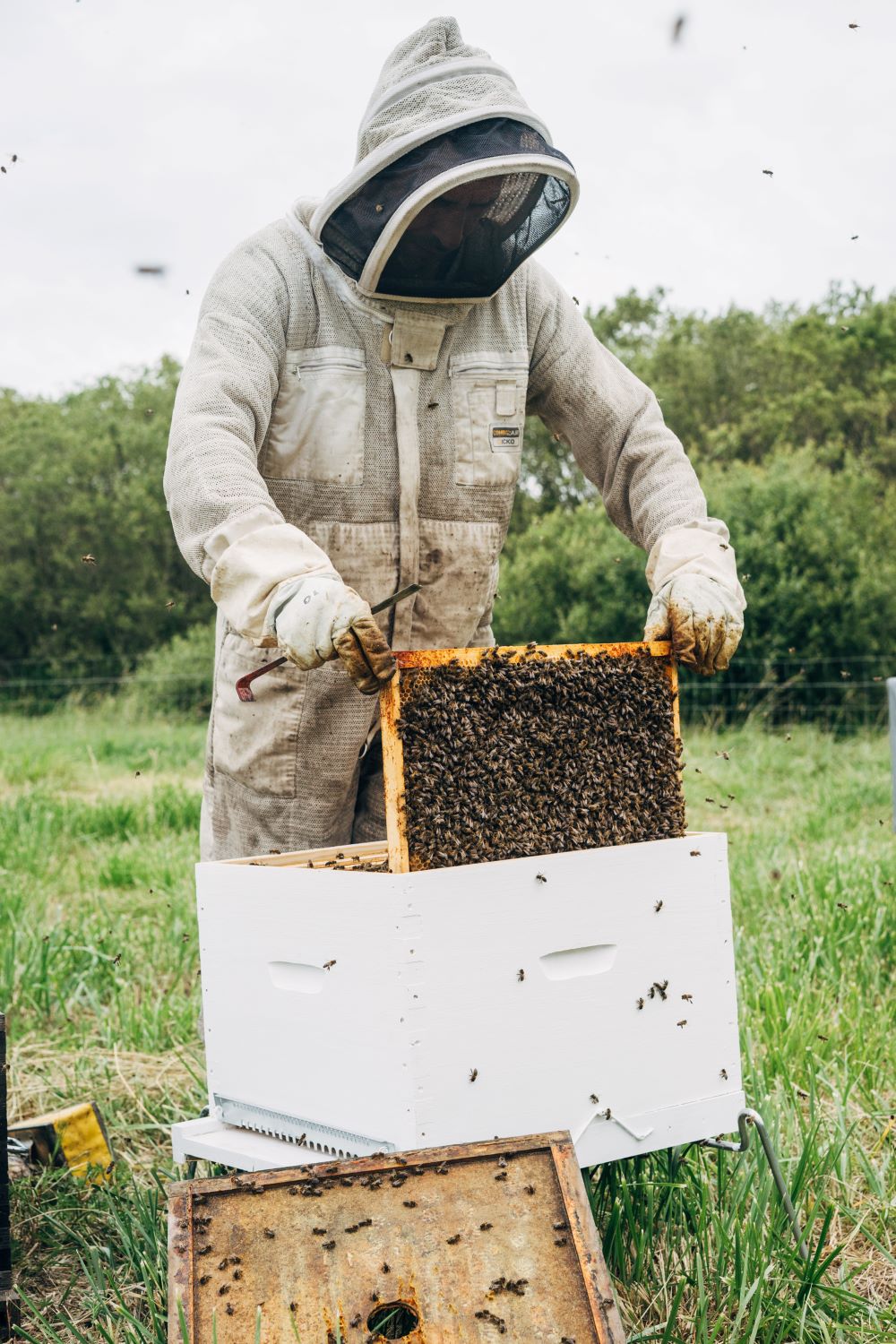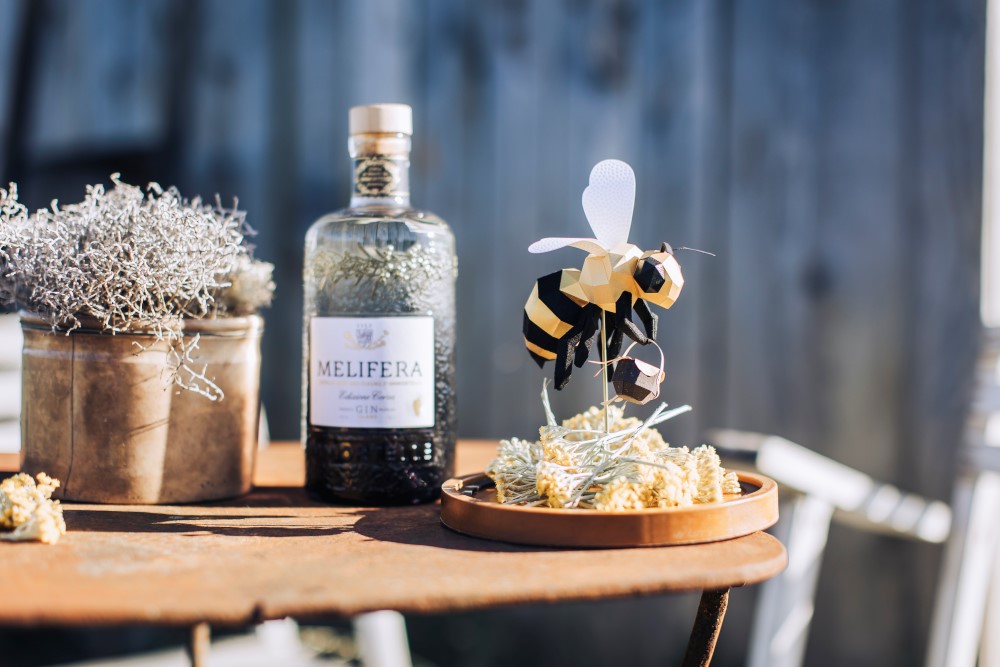Transferring hives and creating new black beehives in Le Jardin Melifera
Transferring hives, creating an apiary, setting up a new colony, … all of this is not an easy task. If many like to play the apprentice beekeepers, we’d rather call a professional.
Having been a beekeeper in the north of Oleron for the past ten years, Emmanuel Rathier is an active member of the Conservatoire de l’Abeille Noire in Oleron and takes care of around fifty beehives within his structure “Les Ruches du Colombier”.
It is he who accompanied us in our desire to create an apiary of black bees in Le Jardin Melifera. We were very lucky a few weeks ago to witness the transfer of his hives into our space. A breathtaking experience!
©Melifera
A few rules to abide to when transferring a hive
What is a hive transfer? In which season does one transfer a hive? What time of the day is the best? Can hives be moved anywhere? What are the steps for a successful transfer? So many questions we are willing to try and answer (with Emmanuel’s knowledge of course).
Hive transfer, displacement, or swarming?
Let’s do a little vocabulary review first. Bees live in colonies, in hives, and several hives form an apiary.
The colony is a highly organized society, made up of thousands of worker bees (50,000) surrounding a single queen, whose sole function is to lay eggs.
It is necessary to differentiate between moving a hive and transferring a hive.
Moving involves taking an entire hive and moving it geographically. On the garden, we carried out a move (geographical, a new area) and a transfer (to new hives, new houses).
In a colony, when the queen ages, it often happens that she leaves with half of the colony to create another hive and gives way to a new, younger queen. This is called swarming.
One technique used, is to artificially swarm the hive to prevent it from division. Artificial swarming means leaving the queen in the initial hive and taking a few frames from the hive with young eggs for the colony to reinstate a new queen in the new hive.
However, we decided to opt for another technique: one where Emmanuel transferred the colony with its queen to a new hive.
Of the five hives purchased, we left an empty hive so that a swarm could eventually settle there.
As in all the Jardin Melifera, focused on agroecology, our desire is to intervene as little as possible. It is the same logic for beekeepers working with the black bee: intervene only when needed in order to let the bees naturally organize themselves according to the seasons.
©Melifera
When is the best time for a hive transfer?
Is there an ideal season to transfer a hive, an ideal time or rules to respect?
Many beekeepers choose winter to perform this operation. However, if this is the most quiet period in terms of beekeeping activity, it is not necessarily the best for bees.
Carrying out a hive transfer in winter means risking losing the colony. Winter is a calm period in terms of reproduction thus if the transfer goes badly, if there is chaos and the queen dies, there will be no succession to assure the colony’s lineage.
The best season for the transfer of hives would probably be spring or summer, when the colonies have emerged again.
Personally, we’ve decided to carry out our transfer in two stages, transferring the first two hives at the end of May, to then complete the process during the summer.
Before the transfer: move the hives. Emmanuel came to install the old hives in the Melifera garden, right next to the permanent hives, at daybreak. It is indeed in the morning before sunrise or in the evening after sunset that a colony can be moved because all the bees are still in the hive.
He made sure to respect a minimum distance of 3 km for this move. Below 3 km, there is a risk that the bees will return to the original location and end up dying.
After a beautiful day during which we give these young ladies time to get used to their new location, we plan the final transfer from one hive to another the following day.
The step-by-step transfer of hives
- The old hives are moved the day before to the Jardin Melifera.
- At noon, when most of the foragers are out and there are fewer habitants in the hive, remove the frames with delicacy
- Care must be taken to ensure that the queen is present (she is larger and easily identifiable)
- The presence of eggs and larvae is reassuring for the vitality of the active queen
- This transfer is an opportunity for our beekeeper to check on the colony’s health and the progress of their architecture word (Emmanuel does not put wax on the frames and lets the architect bees build their cells, their own architecture by secreting scales of wax)
- Finally, we replace the frames gently, hoping that the transferred colony will thrive in its new hive.
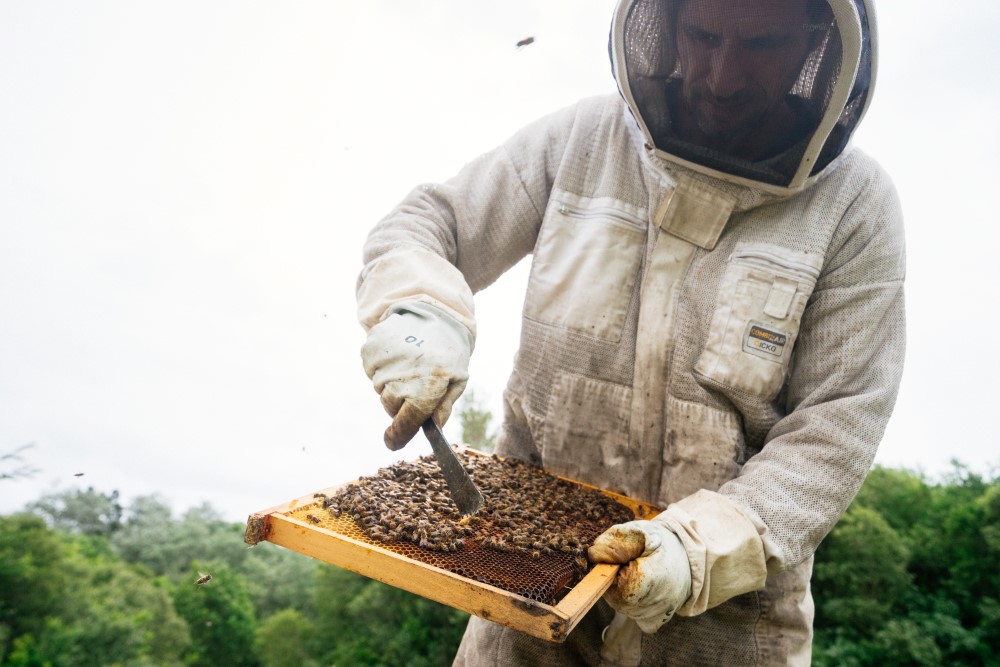
©Melifera
Why this specific transfer of black beehives to the Jardin Melifera?
Since the creation of our organic Gin brand, since the very choice of the name Melifera (which comes from Apis Mellifera Mellifera, scientific name of the black bee), we have decided to fully commit ourselves to the protection of biodiversity. Because it makes sense for us to create a brand with strong commitments. To create an organic Gin, distilled with immortelle flowers, inspired by a generous nature, to which we want to give back.
We are taking action by supporting the black bee conservatory in Oleron through the financing of genetic tests.
The creation of the apiary is another action we hold dear: we have planted immortelles on our land as well as other botanicals and bee plants. Just look at the activity there was in June on flowering immortelles. Our desire is to create a strong biodiversity reserve in the Jardin Melifera where different species of flora and fauna flourish.
A quick reminder on the importance of supporting the black bees
The Black Bee Conservatory in Oleron protects this breed altered by hybridization and threatened with extinction (since one hybrid is enough to modify its genetic capital).
Located in the north of the island, it is a kind of sanctuary which tends to have only black bee apiaries (the south is left to hybrid bees).
The choice to preserve the black bee is motivated by the fact that it is the endemic bee of the region and that it is a more robust bee and more adaptable to climate change.
Not preserving it would mean having only hybrid bees, more fragile and dependent on the hand of the man who feeds it.
You can find out more about the topic by reading the article where Zachary Gaudin explains in detail the specificities of this type of bee and the need to preserve it.
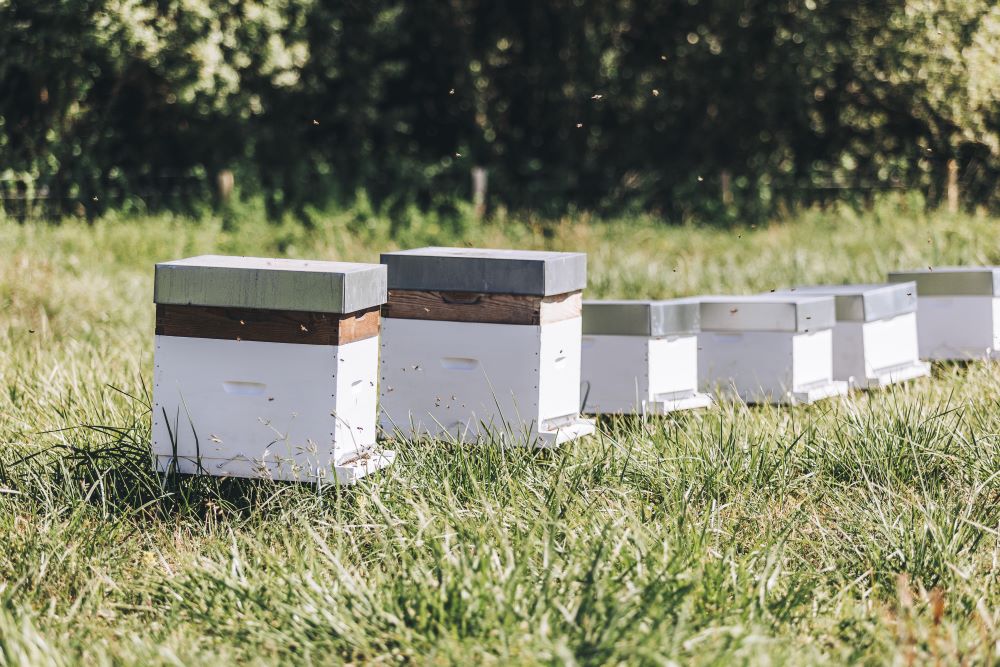
©Melifera
Assessment of the transfer of the hives after a few months
Now that our bees have taken their marks, let’s try to learn some lessons from observing this new apiary.
The summer of 2022 has been a very difficult time for all bees, hybrid and black. Our beekeeper describes this catastrophic year, a year unlike any he has ever known. As he walked around his fifty hives of black bees at the end of the summer, he noticed that there was very little honey in the hives.
The high temperatures and the drought discouraged our bees from leaving the hive. Each movement to forage represented too great a loss of energy.
Additionally there weren’t enough resources to forage anyway, the late April frost having stopped blooming.
The bees went into survival mode and consumed too much of their honey. Through his “Columbine Hives” activity, our favorite beekeeper usually markets his honey production, but this year he was unable to extract any honey.
The situation was even more complicated since, contrary to the usual practices of the beekeeper, Emmanuel was obliged this year to feed the bees with glucose. The black bees, although reputed to be more autonomous, suffered this year and had to be fed artificially. He tells us that this is the first time he has had to feed healthy bees.
Even if the purpose of having hives of black bees is not the production of honey, this sign still worries all professionals and beekeeping amateurs.
What are the prospects for the Jardin Melifera after the transfer of the hives?
Today, the Melifera apiary has four high activity black bee hives and a fifth which is a little more fragile at the moment.
There was no swarming of our bees, and five transfers were made.
The months of September and October mark the arrival of “ivy season”, which the bees are very fond of, a time of great honey production. Our bees will build up their reserves for the winter and should no longer need Emmanuel’s help for several months.
Nevertheless, although he does no longer feed them, our beekeeper will continue to visit them and check on their well-being regularly. He will also have to take samples to check the colony’s purity as the preservation of the black bee is a constant battle.
As for us, we will continue to develop our garden by promoting a variety of plants (such as rosemary and other various plant) which will make bees and other foragers flourish. However, we are aware that to do well, a much larger area as rich as the Jardin Melifera would be needed.
To go a step further in our procedure, and to bring this apiary to life, we are also thinking of offering activities (visits, awareness-raising) around the hives in consultation with the beekeeper and in connection with the Black Bee Conservatory in Oleron and Zachary of the CPIE Marennes-Oleron.
Finally, we are delighted to extend our collaboration with Oleron associations such as “les sorties de la Renarde”, for example, which offers its members reviving strolls along the property and a possible stop by the Jardin Melifera.
Admiring our hives in the garden, observing the bees forage for our immortals this summer, promoting the development of biodiversity, and developing local partnerships in Oleron are all reasons that support our cause and the choice we made to make Melifera a committed brand; these are all small accomplishments that give meaning to our action.
©Melifera
Visit our online shop !

